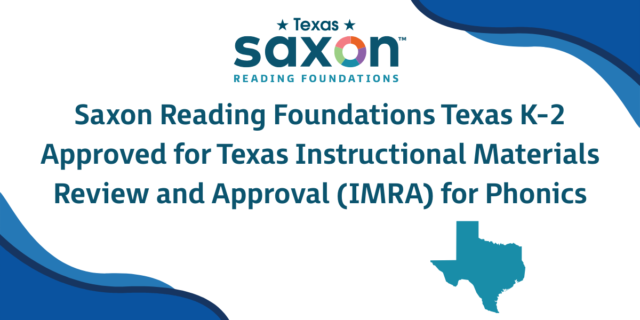
Over the past four decades, educators have gained invaluable insights into the reading process, with new research continually expanding our understanding of how students become proficient readers and how best to support them. One of the most significant contributions in recent years is Drs. Nell K. Duke and Kelly B. Cartwright’s (2021) Active View of Reading theory and reader model. Building upon established frameworks such as the Simple View of Reading (Gough & Tunmer, 1986) and the Reading Rope (Scarborough, 2001), the Active View of Reading incorporates new research to illustrate the complexity of learning to read, highlight previously overlooked components, and identify ways to address reading challenges.

Understanding the Active View of Reading
The Active View of Reading emphasizes the crucial role of active self-regulation, including executive function skills, motivation and engagement, and strategy use, all of which influence word recognition, language comprehension, and the connections between them. This model uniquely highlights the bridging processes that integrate word recognition and language comprehension. Additionally, it underscores the importance of supporting reading fluency, morphological awareness, and vocabulary development—all critical factors in reading success. Each construct in the model is grounded in research showing that it is malleable, and targeted instruction in these areas can improve reading comprehension and address reading difficulties.
Active Self-Regulation
Active self-regulation is the cognitive process by which readers actively manage and integrate the different skills required for effective reading. This includes using strategies, maintaining motivation, and engaging deeply with the text. Duke and Cartwright’s (2021) Active View of Reading illustrates the significant impact that active self-regulation has on learning to read. Their model demonstrates that students' motivation, engagement, executive function skills, and strategy use directly influence their overall reading ability.
Word Recognition
Word recognition is the ability to identify printed words and connect them with their meaning. This skill is developed through explicit and systematic instruction, which includes multisensory learning, spiraled review, and consistent practice. Effective instruction in word recognition helps students build foundational literacy skills such as phonological awareness, alphabetic principle, phonics knowledge, decoding skills, and sight word recognition.
Language Comprehension
Language comprehension is the ability to understand both spoken and written language. The Active View of Reading supports the development of language comprehension by helping students build background knowledge, verbal reasoning skills, understanding of language structures, and theory of mind—all of which are essential for making meaning from text.
Bridging Processes
One of the most groundbreaking aspects of Duke and Cartwright’s Active View of Reading is its focus on bridging processes—components of reading that connect word recognition and language comprehension. These include:
- Print Concepts: Understanding the organization and function of printed text.
- Reading Fluency: Developing speed, accuracy, and proper expression to free cognitive resources for comprehension.
- Vocabulary Knowledge: Expanding word meanings to enhance both decoding and comprehension.
- Morphological Awareness: Recognizing and understanding word parts (prefixes, suffixes, roots) to improve reading efficiency.
- Graphophonological-Semantic Cognitive Flexibility: The ability to dynamically connect letters, sounds, and meanings to make sense of words in various contexts.
These bridging processes are often overlooked in traditional reading models but play a vital role in reading development. By integrating instruction that targets these areas, educators can provide students with a more comprehensive and effective approach to literacy.
Developing Successful Readers
Each of these components—Active Self-Regulation, Word Recognition, Bridging Processes, and Language Comprehension—is essential for building early literacy skills that lead to reading proficiency. Duke and Cartwright’s (2021) Active View of Reading provides a framework that extends beyond the Simple View of Reading, offering deeper insights into how students learn to read.
By adopting this research-based model, educators can ensure they provide reading instruction that addresses every element of the Active View of Reading, thereby improving reading comprehension and setting students on the path to long-term reading success. As research continues to evolve, the Active View of Reading serves as a guide for literacy instruction, emphasizing the importance of an engaged, strategic, and active approach to reading.
References
Duke, N. K., & Cartwright, K. B. (2021). The science of reading progresses: Communicating advances beyond the simple view of reading. Reading Research Quarterly, 56(S1), S25–S44.
Gough, P., & Tunmer, W. (1986). Decoding, reading, and reading disability. Remedial and Special Education, 7, 6–10.
Scarborough, H. S. (2001). Connecting early language and literacy to later reading (dis)abilities: Evidence, theory, and practice. In S. Neuman & D. Dickinson (Eds.), Handbook for research in early literacy (pp. 97–110). Guilford Press.
***
Saxon® Reading Foundations is a supplemental series for grades K–2 that aligns to the Active View of Reading and explicitly teaches phonemic awareness, phonics, and fluency in a way that is supported by scientific research and proven effective by years of classroom success. Learn more about how Saxon Reading Foundations aligns to the Active View of Reading in our whitepaper.


